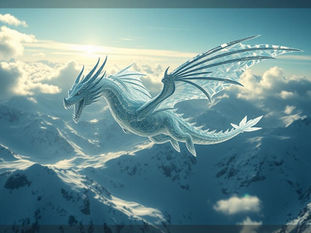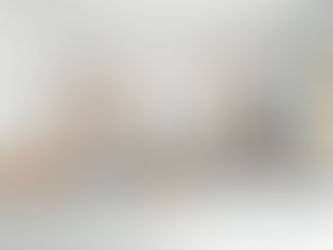
Crafting Compelling Cinematic Images in Midjourney V6
Apr 30
5 min read
0
8
0

Want to create stunning images in Midjourney that look like movie stills or posters? It might seem like you need incredibly long and complex descriptions. But there's a simpler way to structure your prompts, especially with Midjourney Version 6. This guide breaks down a straightforward method using an easy-to-remember acronym to help you build powerful cinematic prompts.
Using the FRAME Method for Cinematic Prompts
To make creating your prompts easier, you can use the FRAME method. This acronym helps you remember the key elements to include for a cinematic feel:
Focus and Shot: Describe the main subject, their action, the camera angle, and the shot type.
Resolution: Specify camera types and lenses for a film-like appearance.
Ambient: Set the scene's location and time.
Mood and Palette: Outline the overall feeling and color scheme.
Extras: Add details like clothing, props, or text overlays.
Let's look at each part in more detail.
Focus and Shot: Directing the Viewer's Eye
This is about telling Midjourney who or what is important and how the 'camera' sees them. You need to mention the main character or object, what they are doing, and the camera view.
Think about camera angles:
Low Angle: Camera looks up, making the subject appear powerful or large.
High Angle: Camera looks down, making the subject seem small or vulnerable.
Dutch Angle: Tilted camera creates a sense of unease or dizziness (like in Mission Impossible).
Overhead Shot: Camera is directly above, showing the scale of the surroundings.
Eye Level: Camera is at the subject's eye height, creating a natural, conversational view.
Shoulder Level: Camera shows the subject from the shoulders up.
Also consider the *focus*. [B]Shallow focus[/B] blurs the background to highlight the subject. [B]Deep focus[/B] keeps everything in the scene sharp, from foreground to background.
Resolution: Capturing the Film Look
Different films use specific cameras and lenses that affect the final image quality and look. To mimic this, you can mention camera types (like Arri Alexa, RED) or film types (like 35mm film).
How do you find this information? You can look up specific films on sites like IMDb (check the technical specs section) or ShotOnWhat.com. Use this info to add realism to your prompts.
Ambience: Setting the Scene
Where and when is your image taking place? This is crucial for setting the right mood and context. Mention the location (e.g., "1970s New York City," "inside a spacecraft," "futuristic city") and the time of day or era (e.g., "during the day," "at night time," "1960s"). The setting makes a huge difference in the results.
Mood and Palette: Guiding the Colors and Emotion
What feeling do you want the image to evoke? You can describe the mood directly (e.g., "somber," "gritty," "hopeful"). Connect this with a color scheme or palette that reflects the mood. Understanding color theory can help. You can even look up the color palettes used in existing films for inspiration (e.g., "warm oranges and browns," "dark urban colors").
Extras: Adding Depth and Detail
These are the finishing touches that add dimension to your image. Include details about the character's clothing (wardrobe), important objects in the scene (props), or even specific text you want included, like a movie title (often written in capital letters in the prompt).
Why Use This Structured Approach?
Clearly defining these elements helps Midjourney understand your vision. If you don't specify the main subject or setting, you leave too much open to interpretation, and the results might not be what you expect. Mentioning cameras and lenses creates a unique look. Setting the time of day and mood gives the image context and emotional impact. Adding extras makes the scene feel more complete and visually rich.
Managing all these details for multiple images can be time-consuming. Tools like the Midjourney Automation Suite from TitanXT can help handle the prompt generation and management process, allowing you to focus on your creative ideas rather than the repetitive tasks.
Helpful Midjourney V6 Settings
Midjourney V6 includes settings that are especially useful for cinematic images:
`--style raw`: This is important for a realistic, authentic look. It replicates real-life photography without needing words like "ultra realistic."
`--style medium`: This is the default style (`--s 100`). Lower values (`--s`) give you more control based on your prompt words, while higher values give Midjourney more freedom with its aesthetic.
`Remix mode`: Turn this on to easily modify your prompt after generating an image, allowing you to experiment with slight changes.
`--no [item]`: Use this to tell Midjourney to exclude a specific element from the image.
`Variation modes (Subtle/Strong)`: These appear after generating an image and let you create variations. Strong variation changes the image more significantly than subtle variation.
`Turbo/Fast/Relaxed mode`: Turbo is the fastest but uses more GPU hours. Fast and Relaxed take longer but can achieve similar quality results and are less costly.
Examples from Film
Let's look at how the FRAME elements could translate for famous films:
Schindler's List
Focus/Shot: Oscar Schindler, contemplative, close-up shot.
Resolution: Black and white film quality, shot with an Arri Alexa 35BL camera.
Ambience: War-torn era, crackle effect.
Mood/Palette: Monochromatic, somber.
Extras: Schindler's attire, SCHINDLER'S LIST title in a classic font.
Goodfellas
Focus/Shot: Henry Hill, medium shot, smirking.
Resolution: Gritty 35mm film style.
Ambience: 60s to 70s New York City.
Mood/Palette: Dark urban colors.
Extras: Vintage suit, GOODFELLAS title in bold classic font.
The Shawshank Redemption
Focus/Shot: Andy Dufresne, hopeful, medium shot.
Resolution: Rich color palette, 35mm film style.
Ambience: Inside Shawshank prison.
Mood/Palette: Earthy tones.
Extras: Prison uniform, THE SHAWSHANK REDEMPTION title in bold font (Note: Multi-word titles can be tricky).
Apollo 13
Focus/Shot: Astronauts and spacecraft, medium shot.
Resolution: Arri Alexa 353 camera with a Panavision Primo lens.
Ambience: Inside Apollo 13 spacecraft.
Mood/Palette: Cool metallics and blues.
Extras: Space suits, APOLLO 13 title in a technical font (Note: Font style accuracy varies).
By breaking down the elements, you can build your prompt sentence by sentence based on your planning.
Creating numerous variations or organizing prompts for different styles can quickly become complex. Consider how automated tools can streamline your workflow. The Midjourney Automation Suite from TitanXT is designed to help manage and enhance your Midjourney creative process, saving you time and speeding up your image generation.
Conclusion
Creating cinematic images in Midjourney does not require overly complicated prompts if you use a structured approach like FRAME. By considering the Focus & Shot, Resolution, Ambience, Mood & Palette, and Extras, you provide Midjourney with clear instructions to achieve the specific film-like look you want. Remember to combine these elements with useful V6 settings like `--style raw` for the best results. Experiment with different combinations and film references to find your unique cinematic style.
Ready to powerful Midjourney workflow? Learn more about the Midjourney Automation Suite by TitanXT and how it can help boost your creativity and efficiency.






